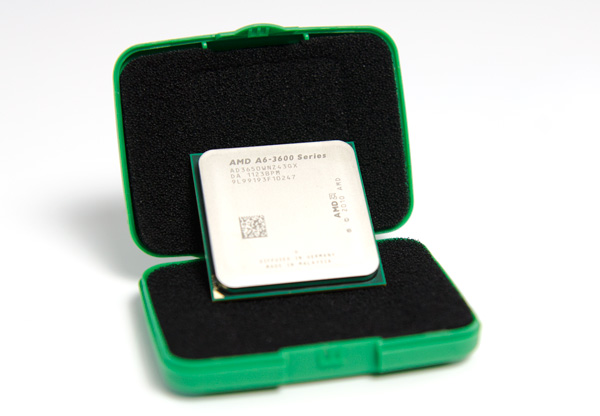The Sandy Bridge Pentium Review: G850, G840, G620 & G620T Tested
by Anand Lal Shimpi on August 23, 2011 12:11 AM ESTThe Matchup
The Sandy Bridge Pentiums go head to head with AMD's Athlon II and to a lesser extent the new triple-core AMD A6. At the low end we have the Athlon II X2 260 vs. Intel's Pentium G620. AMD has the clock speed advantage (3.2GHz vs. 2.6GHz) but Sandy Bridge does offer better performance at the same clock, we'll have to see if the 600MHz advantage is too much for Intel to overcome.
Moving on up AMD gets to throw more cores at the competition. The Athlon II X3 455 (3.3GHz) has three cores to the Pentium G840's two (2.8GHz), although the clock speed advantage shrinks a bit.
Finally compared to the Pentium G850 we have two options from AMD. If you can find one there's the Athlon II X4 635. The clock speed advantage goes away completely but AMD delivers twice the cores of Intel's Pentium G850. The 635 is no longer on AMD's price list so your chances of finding one at a reasonable price go down considerably. The Athlon II X3 460 is the only other similarly priced competitor, and its performance should be similar to the 455 I mentioned above.
Meet the A6
Although at a slightly higher price point than the most expensive Sandy Bridge Pentium, we also have a lower cost member of the Llano family: AMD's A6-3650. For $20 less than the flagship 3850, the A6-3650 loses 300MHz on the CPU clock and lops off 80 GPU cores. The GPU also runs at a slower 443MHz frequency. The TDP remains unchanged at 100W. Given the small price difference between a 3650 and a 3850 I'd much rather opt for the latter but we'll see what the slower GPU does to performance when every dollar counts.
















110 Comments
View All Comments
loeakaodas - Tuesday, August 23, 2011 - link
Why intel, why? Do you still ram these chips down our throats, they're so short of features that would be great for a cheap HTPC, but aren't all that attractive if you want to do anything but basic stuff with your machine.Blaze-Senpai - Tuesday, August 23, 2011 - link
And this is aimed at those people that only want to do basic stuff with their machine.yankeeDDL - Tuesday, August 23, 2011 - link
It still makes no sense: a Pentium 850 costs $98 (http://www.newegg.com/Product/Product.aspx?Item=N8... an A6-3650 costs $119 (http://www.newegg.com/Product/Product.aspx?Item=N8...For $20 you get a real graphic cards which acelerated web browsing and video decoding, so it is actually very useful even for very basic systems.
I see no value, whatsoever, for entry-level Sandy Bridge, as they have a higher price/performance ratio than most AMD stuff.
Incidentally, while SB is undoubtedly the finest piece of CPU technology today, at these prices it makes sense only starting from the Core i5-2400, which, basically, outperforms nearly every AMD CPU.
ET - Tuesday, August 23, 2011 - link
A G620 plus a discrete low mid range ($70-80) GPU will give you a much better entry level gaming PC than an A6-3650, for not a lot more money. (For about the same price as an A8-3850, which will still be slower for gaming than the G620 system).yankeeDDL - Tuesday, August 23, 2011 - link
I am not convinced, but you might be right about the gaming rigs. I would argue that a cheap discrete graphic card would CrossFire nicely with tha A6, but that's not the point anyway.I was talking, however, about entry-level systems.
There`s a "Best CPU for the money" update on Tom's hardware today: you can see that the G620 is not even in the picture, in favor of the Athlon II X3 and the G850.
If I was to play games rarely, I would much rather have an efficient but relatively powerful APU, than having to use an external graphic card: this way I wouldn't have to pay the electricity bill to have my GPU run a screensaver.
Taft12 - Tuesday, August 23, 2011 - link
Perhaps, but an Athlon II X3 450 plus the same $70-80 GPU would make for an even better entry level gaming PC at the same price.lowlymarine - Tuesday, August 23, 2011 - link
Not really. Many games still struggle to hit even two cores efficiently; few if any would benefit significantly from the third.Roland00Address - Tuesday, August 23, 2011 - link
For example see Grand Theft Auto IV PC edition. This game is unplayable on a Dual Core pc without a massive overclock, but runs fine on a slow tri or quad core. This was due to Xbox 360 having a tri-core processor (The 360 cpu is also a PowerPC design not x86 but that doesn't really matter.)Samus - Tuesday, August 23, 2011 - link
great article Anand!owned66 - Sunday, February 10, 2013 - link
most games after 2011play very well with multicore systems
my qx6700 was maxed out at 100% playing bf3
playing with a 2600 sandy maxes out at 85% equally on all cores and gpu maxed at 100% gpu load
increasing gpu clocks would increase cpu load which is a good sign of fine tuning